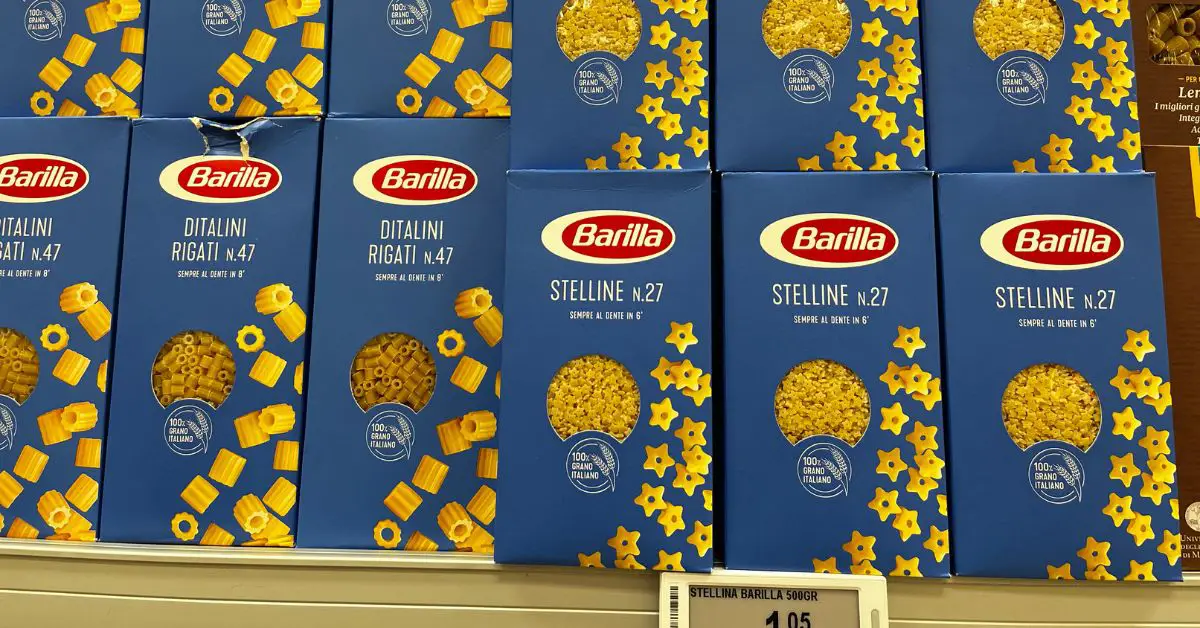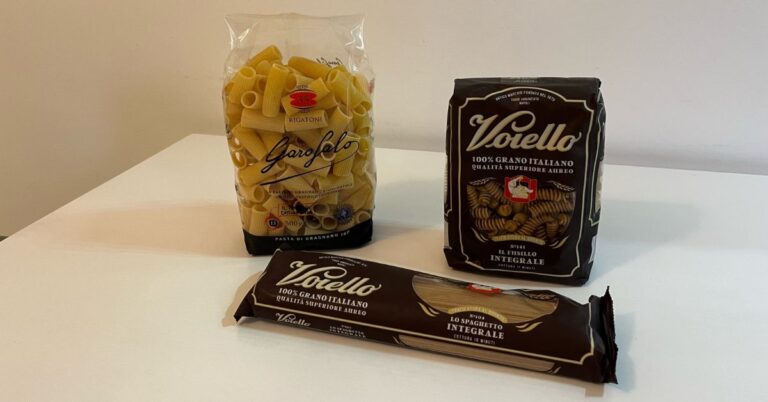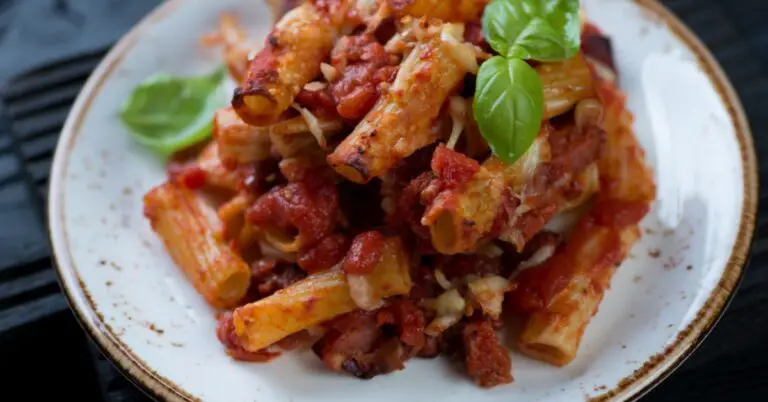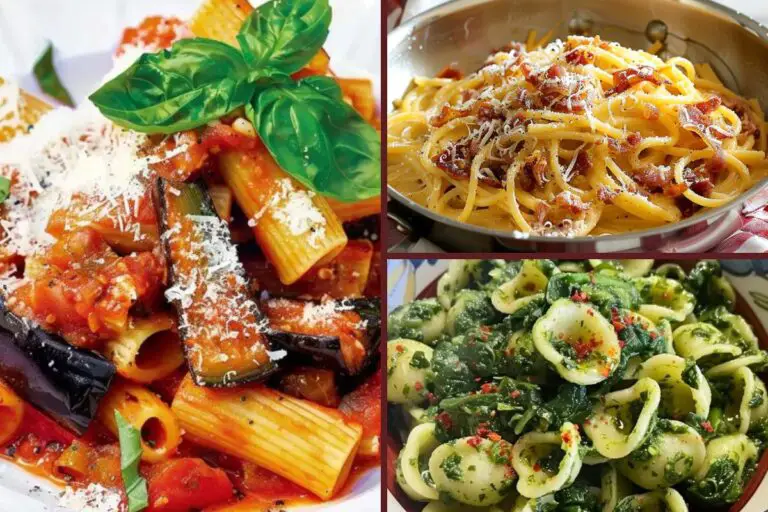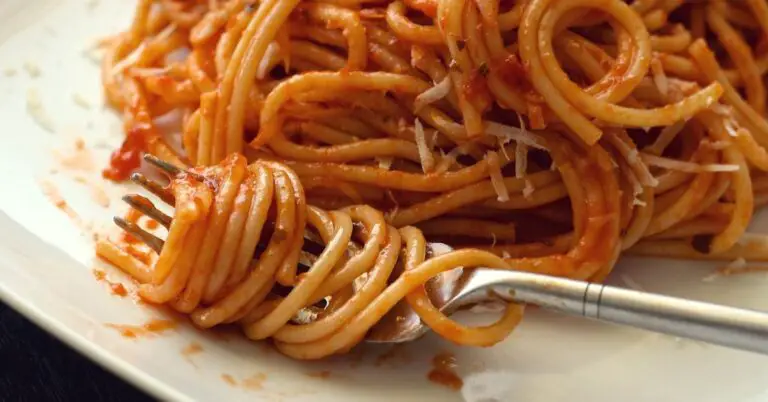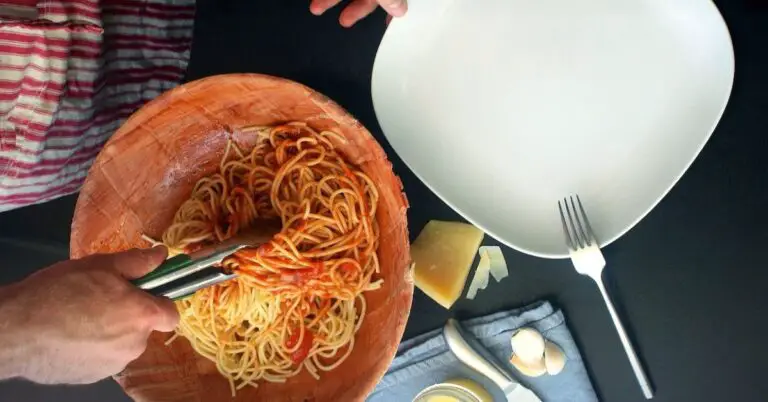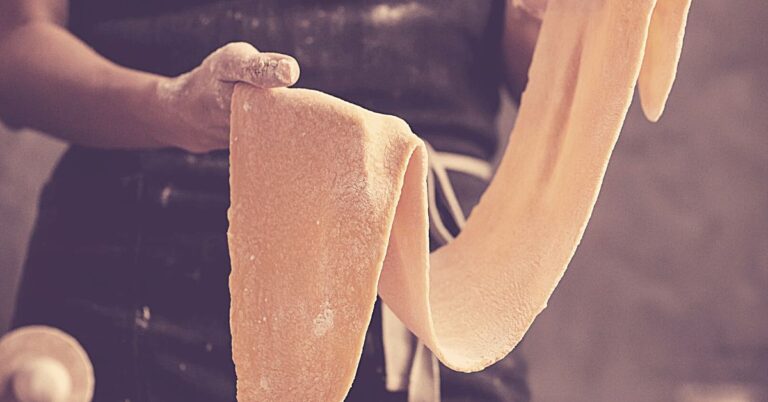Pastina is the go-to comfort food for Italians during winter, when feeling unwell, or as a beloved dish among children.
Pastina is a super tiny pasta made from durum wheat, about the size of a crumb. It’s usually round and a bit uneven, and it’s so small that it’s often used in soups. When you cook pastina, you usually put it in a tasty broth.
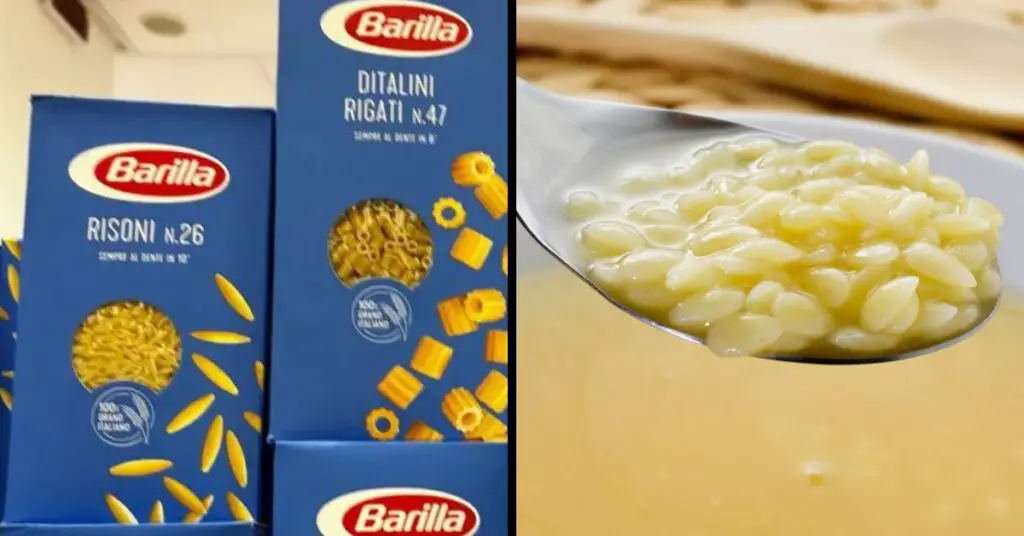
In Italy, there’s a popular dish called “Pastina in brodo,” which means “little pasta in broth.”
You might not see it in restaurants much because it’s something Italians usually make at home. It’s really easy to cook and it’s comforting, kind of like how chicken noodle soup makes you feel better when you’re sick.
Types of Pastina
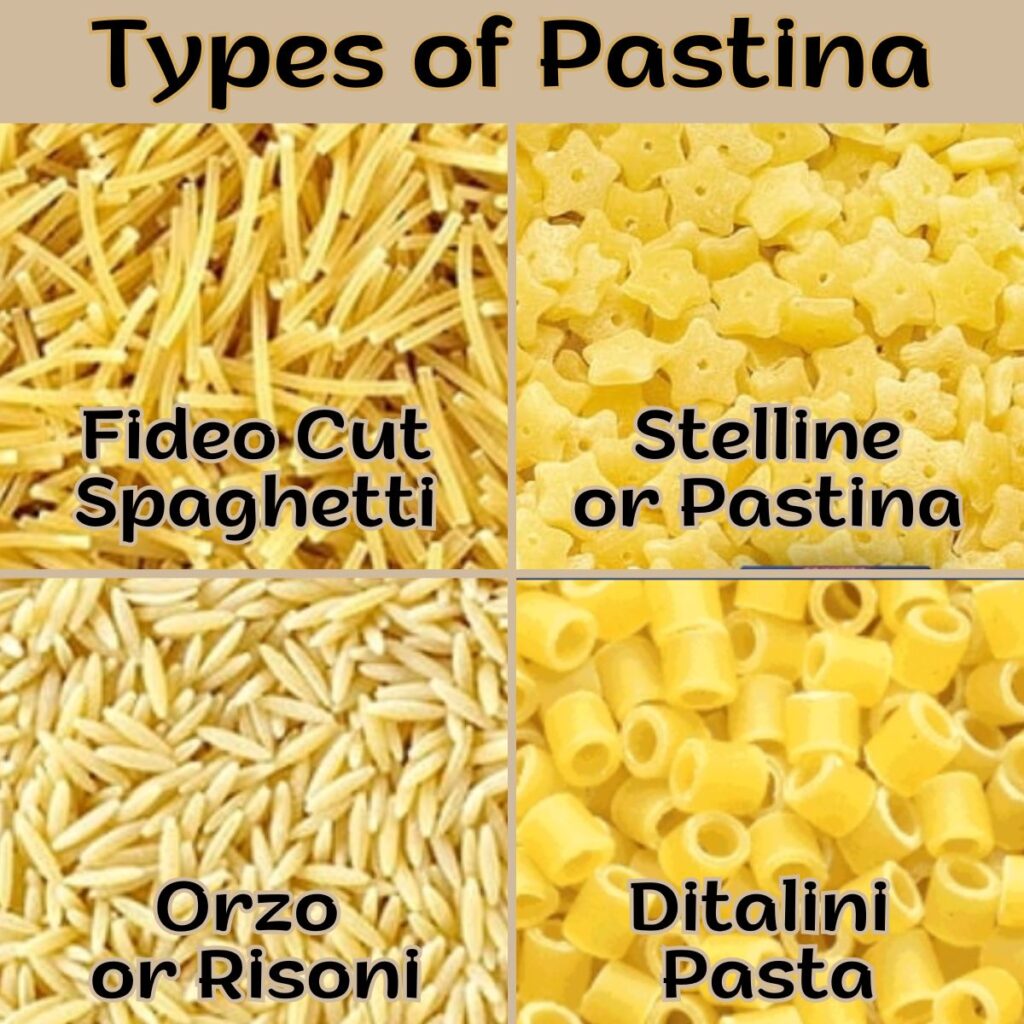
Here’s a short list of the most popular and best-selling pastina types in the United States:
- Stelline: Small, star-shaped pasta, especially loved by kids.
- Acini di Pepe: Tiny, round pasta, perfect for soups and broths.
- Orzo: Resembles rice grains, used in soups and salads.
- Ditalini: Small tube-shaped pasta, great in hearty soups or stews.
- Risoni (Orzo Lungo): Larger, rice-shaped pasta, used in broths or as a rice substitute.
- Alphabet: Alphabet-shaped pasta, fun for children.
Pastina vs Stelline
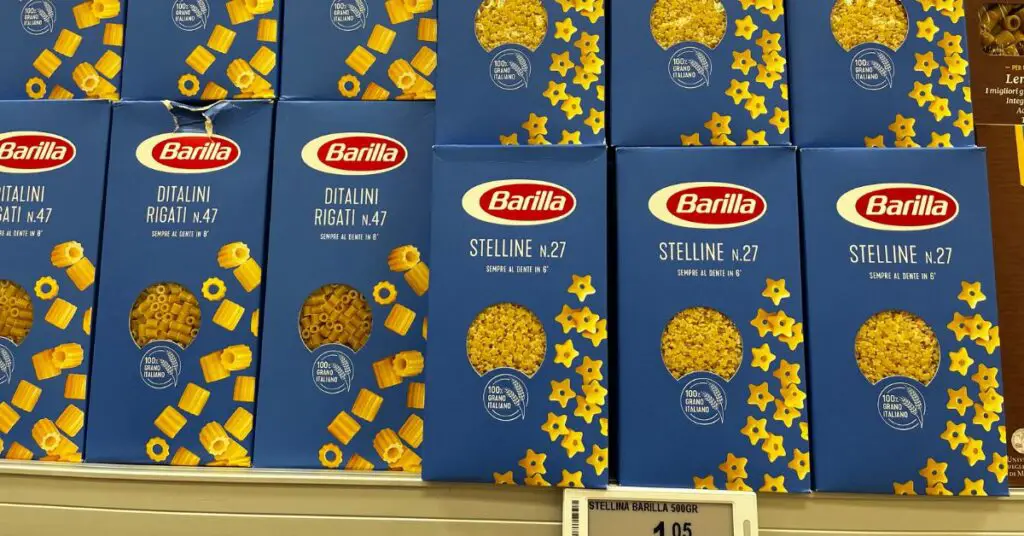
Pastina is a generic term for very small pasta, often used in broths. Stelline, a type of pastina, are tiny and star-shaped. Perfect for light soups or for kids.
Pastina vs Couscous
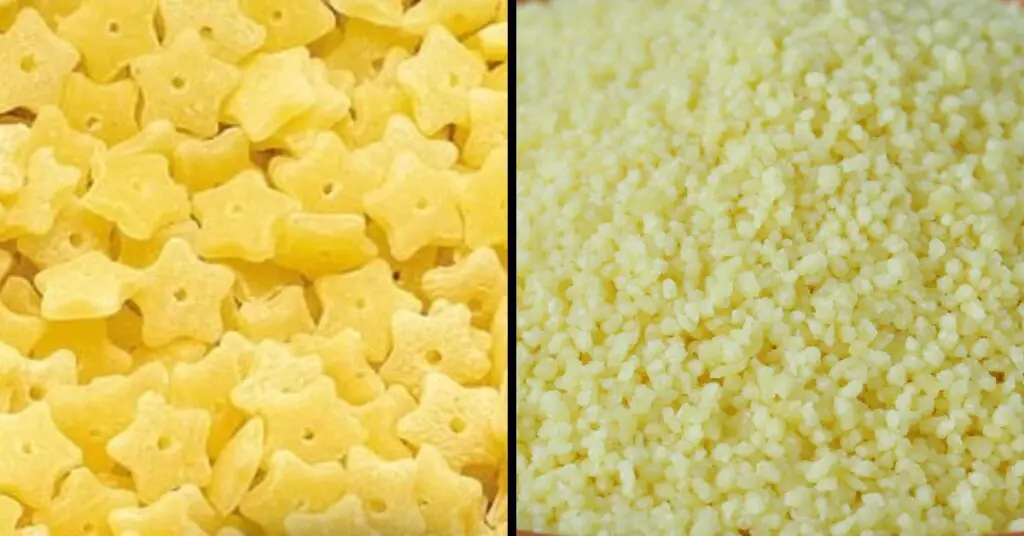
Pastina is small Italian pasta made from wheat. Couscous, on the other hand, is a North African dish made from semolina. Pastina is cooked by boiling, while couscous is prepared with steam.
Pastina vs Ditalini
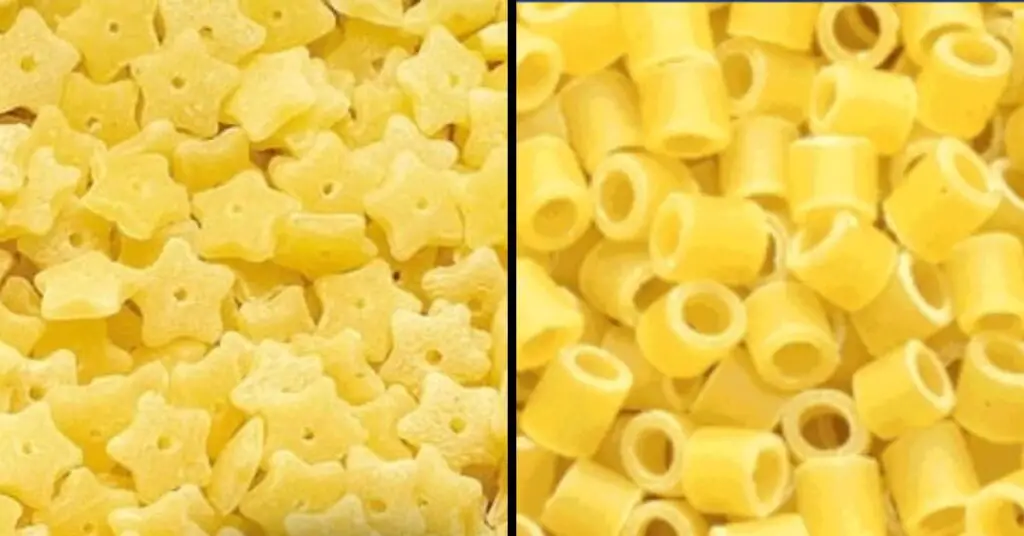
Both are small pastas, so they’re pastine, but ditalini are shaped like small tubes, larger than classic pastine. They are great in hearty soups or stews.
Pastina vs Risoni (a.k.a. Orzo)
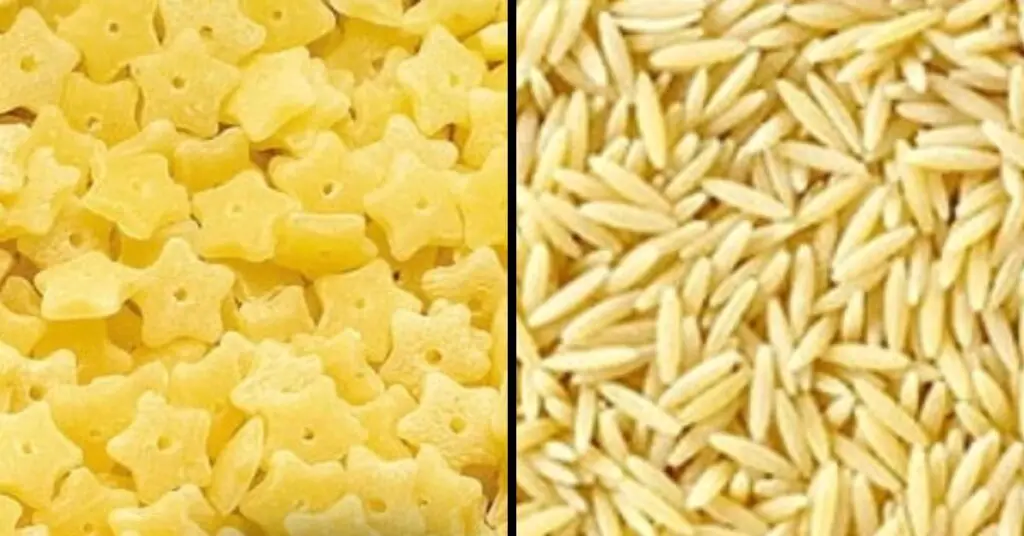
Pastina is very small, while risoni (also called Orzo) are larger and shaped like rice grains, though they are indeed a type of pasta. Risoni are ideal in broths or as a substitute for rice in risottos.
What is pastina made from?
Pastina is made from durum wheat, like any other Italian pasta shape; enriched with essential nutrients, such as thiamin, iron, riboflavin, and niacin; and is easily digested.
In Italy we eat pastina as a first course made with meat broth, if desired you can add a drizzle of extra virgin olive oil and grated Parmesan cheese on top. Its preparation is very simple and the proportion between broth and pasta varies according to personal taste.
Some Italians prefer a drier pastina, others a soupier one. This pasta dish is highly appreciated by adults and children.
Why is pastina called pastina?
Pastina in English can be translated as “small pasta”, pastina is the diminutive of pasta. In fact, this dish is prepared using very small pasta shapes, which are cooked in broth and then eaten with a spoon.
As you already know, in Italy there are many shapes of pasta, including various types of pastina.
Here you can find the most common shape of pastina in Italy:
- stelline, very small pasta stars;
- risoni, pasta similar to grains of rice;
- ditalini, small tubes;
- farfalline, small butterflies pasta;
- conchigliette, small shells;
- anellini, small rings.
If you want to prepare pasta in broth and you are in Italy, you are spoiled for choice! Just pay attention and don’t confuse risoni (a type of pastina) with riso (rice).
How do Italians cook pastina?
Cooking pastina is very simple even if it is a different process than cooking the classic pasta shapes: pour some meat broth into a saucepan and bring to a boil, you can use vegetable broths, beef, or chicken broth. When the broth is boiling you can pour the amount of pastina you desire and continue cooking according to the instructions on the package.
Did you know that pastina is one of the fastest pasta shapes to cook? If you are in a hurry this is the pasta for you!
Use a ladle to serve your pastina in a soup bowl and add extra virgin olive oil and grated Parmesan cheese on top. Like any soup, use a spoon to eat your pastina, fork and knife will not help you.
How do you drain a pastina?
You don’t! Pastina is cooked directly in the broth so you don’t have to drain it but you have to serve it with a ladle, keeping the broth and pastina together on the same shallow plate. If you want a thicker pastina, use less broth and more pasta. And don’t forget, never rinse it under water, for any reason at all.

